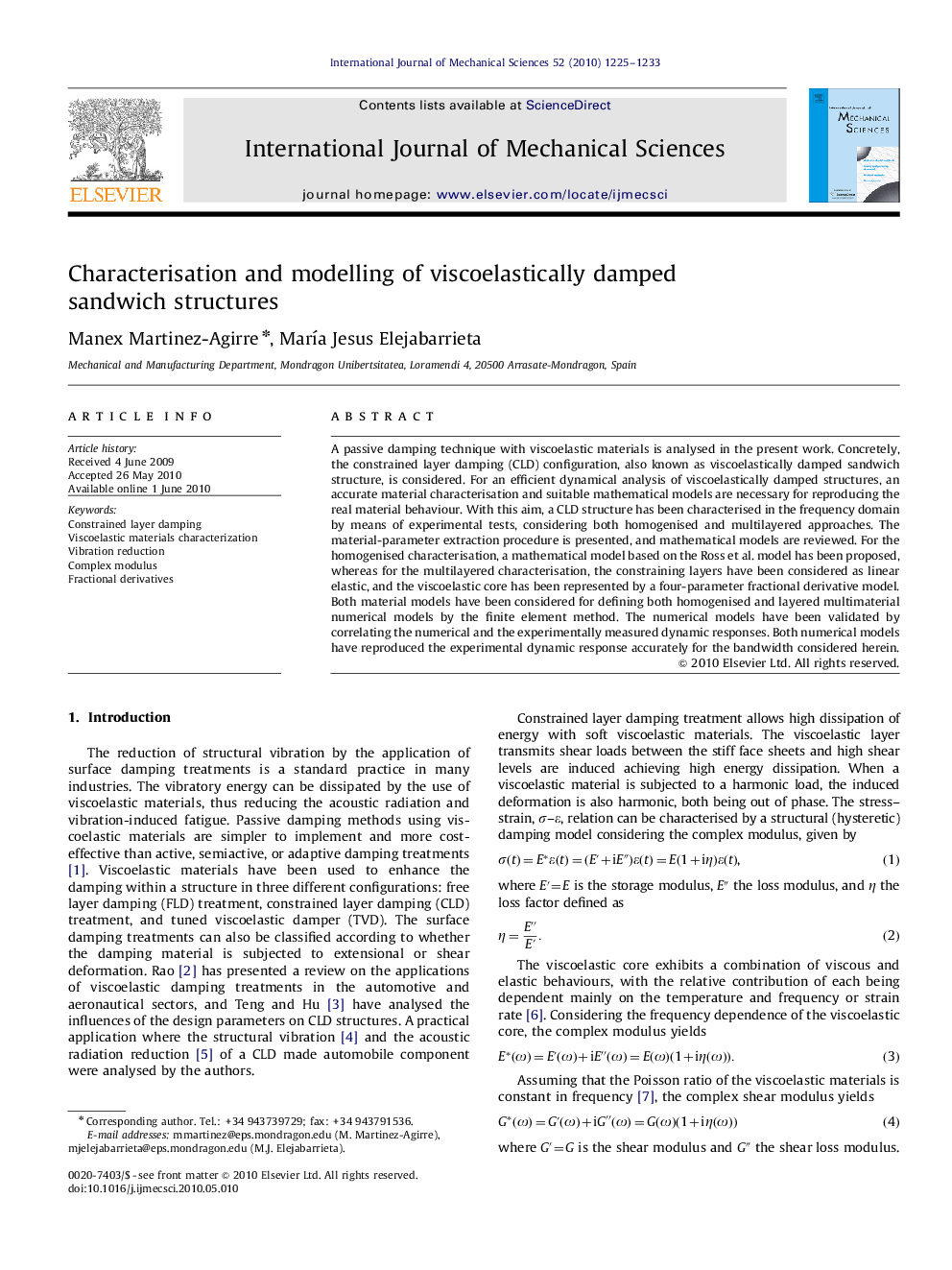| Article ID | Journal | Published Year | Pages | File Type |
|---|---|---|---|---|
| 780310 | International Journal of Mechanical Sciences | 2010 | 9 Pages |
A passive damping technique with viscoelastic materials is analysed in the present work. Concretely, the constrained layer damping (CLD) configuration, also known as viscoelastically damped sandwich structure, is considered. For an efficient dynamical analysis of viscoelastically damped structures, an accurate material characterisation and suitable mathematical models are necessary for reproducing the real material behaviour. With this aim, a CLD structure has been characterised in the frequency domain by means of experimental tests, considering both homogenised and multilayered approaches. The material-parameter extraction procedure is presented, and mathematical models are reviewed. For the homogenised characterisation, a mathematical model based on the Ross et al. model has been proposed, whereas for the multilayered characterisation, the constraining layers have been considered as linear elastic, and the viscoelastic core has been represented by a four-parameter fractional derivative model. Both material models have been considered for defining both homogenised and layered multimaterial numerical models by the finite element method. The numerical models have been validated by correlating the numerical and the experimentally measured dynamic responses. Both numerical models have reproduced the experimental dynamic response accurately for the bandwidth considered herein.
